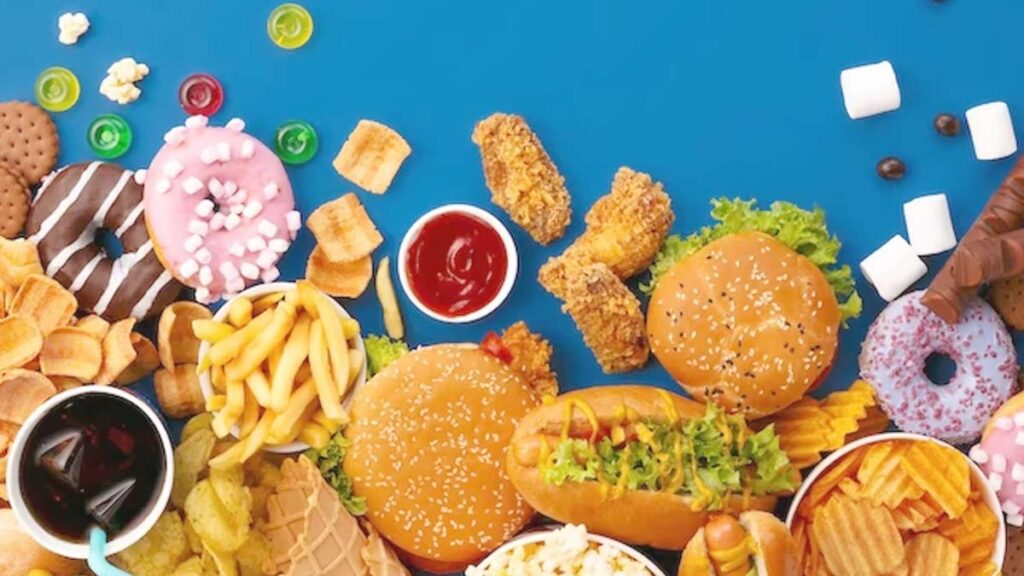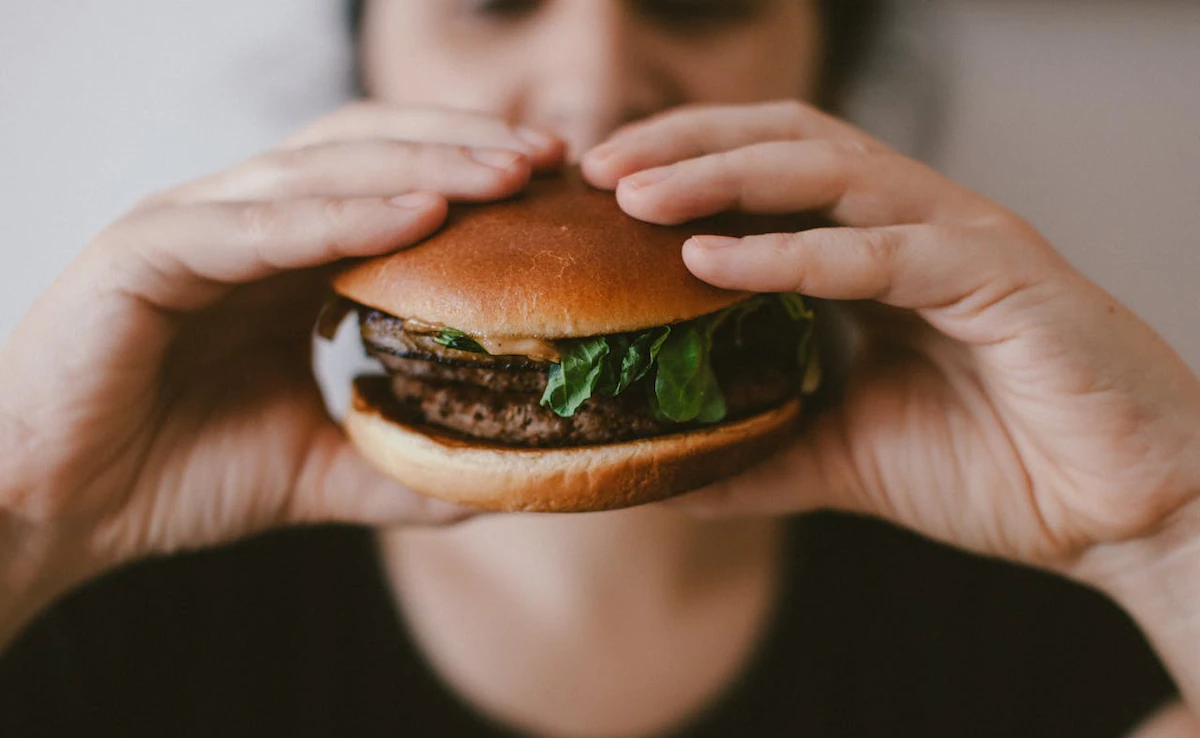Fast Food Addiction: In today’s digital-first world, food is no longer something you plan, prepare, or wait for. Instead, with a few taps on your smartphone, a pizza, burger, or fried chicken bucket can arrive at your doorstep within minutes. For many Indians—particularly urban youth—this convenience has turned fast food into a daily routine rather than an occasional indulgence. This growing reliance is often described as fast food addiction, where cravings, marketing, and accessibility override nutritional balance.
Health experts argue that while fast food addiction may not yet be a medically recognized condition like alcohol or nicotine dependence, the behavioural and neurochemical pull is strikingly similar. According to Dr. Anu Mathew, Consultant Endocrinology at Fortis Hospital, “Taste, easy availability, and zero effort make fast food extremely comforting and hard to quit.” Foods rich in sugar, fat, and salt activate the brain’s dopamine pathways, creating a cycle of cravings and gratification that resembles substance addiction.
Unfortunately, the long-term consequences of this shift are already evident. India is witnessing rising cases of obesity, diabetes, PCOS, fatty liver, and even depression among young people—conditions once associated with older age groups. This article explores the science behind fast food addiction, how convenience and marketing fuel the trend, the health risks it brings, and what individuals and families can do to break free from its grip.
Is Fast Food Addiction Real?
While “fast food addiction” is not a clinical diagnosis, research shows that high-fat and high-sugar foods stimulate the same brain reward centers as nicotine and drugs. The release of dopamine makes these foods pleasurable, reinforcing cravings and leading to repetitive consumption even in the absence of hunger.
That explains why someone might crave French fries or a burger despite having eaten a full meal. The addiction lies less in nutritional need and more in the brain’s demand for instant gratification.
How Convenience Has Changed Eating in India
1. Delivery Apps and 24×7 Access
Food delivery platforms have turned fast food into a 24×7 convenience, making it easier than ever to order calorie-dense meals late at night.
2. Stress and Lifestyle Pressures
Dr. Mathew highlights that academic pressure, work stress, and lack of cooking skills make fast food the default choice. Cheap combo deals often feel more attractive than preparing a home-cooked meal.
3. Aggressive Marketing
Advertising and influencer promotions amplify the problem. A 2021 AIIMS-ICMR study revealed that youth are heavily influenced by celebrity endorsements and discounts, often prioritizing fast food over healthier traditional meals.
Read about: Facilitators and Barriers of Lung Cancer Screening Participation: A Global Evidence-Based Review
The Side Effects of Fast Food Dependence
a) Metabolic and Physical Health Risks
- Increases risk of obesity, diabetes, cardiovascular disease, fatty liver.
- Long-term consumption of ultra-processed foods is linked to early mortality.
b) Gut Health & Digestion
- Alters gut microbiota, reducing microbial diversity.
- Weakens immunity and disrupts metabolism.
c) Hormonal Disorders
- Contributes to rising cases of PCOS and early-onset diabetes.
- Worsens insulin resistance due to high sugar intake.
d) Mental Health Impact
- Processed diets are linked with depression, stress, and mood swings.
- Nutritional deficiencies may worsen anxiety and fatigue.
Can Fast Food Ever Be Healthy?
While some fast-food chains promote “healthier” options like wraps or salads, hidden sodium, oils, preservatives, and processed ingredients mean that even these alternatives are not truly healthy. Experts suggest treating fast food as an occasional indulgence rather than a staple of daily nutrition.

Breaking the Cycle: Prevention and Precautions
Mindful Eating
Plan meals in advance to reduce impulsive ordering.
Healthy Swaps
Keep fruits, nuts, or roasted snacks at hand instead of fried items.
Cooking Skills
Learn 10–15 minute recipes like poha, upma, or besan chilla to rival fast food in convenience.
Stress Management
Exercise, meditation, and proper sleep can reduce emotional eating.
Family and School Role
Parents and schools should limit junk food availability and promote seasonal, traditional diets.
Also read: Next BMW X5 to Add Hydrogen Fuel Cell Power in 2028
Conclusion
Fast food addiction is not just about taste—it is about how convenience, lifestyle stress, and marketing rewire human behaviour. For many, fast food has replaced the traditional kitchen, becoming a quick fix for hunger and stress. But the hidden costs are steep, impacting not only physical health but also mental well-being.
The growing rates of obesity, diabetes, hormonal disorders, and digestive issues among Indian youth serve as a wake-up call. Unlike previous generations, today’s young population faces lifestyle diseases earlier than ever, threatening long-term productivity and quality of life.
Yet, fast food dependence can be broken. Through awareness, small lifestyle adjustments, and mindful eating practices, individuals can reclaim control over their diets. Simple changes like cooking quick meals, choosing healthier snacks, and managing stress more effectively can reduce reliance on processed foods.
Ultimately, combating fast food addiction requires both individual discipline and systemic changes. Families, schools, and policymakers must collaborate to promote healthier choices, regulate aggressive marketing, and make nutritious food more accessible. Only then can India move beyond the culture of instant convenience and build a healthier future.
Frequently Asked Questions
1. Is fast food addiction recognized medically?
Fast food addiction is not yet classified as a formal medical disorder. However, studies show that processed, high-sugar, and high-fat foods activate the same dopamine reward pathways as drugs, leading to dependency-like behavior. This makes it difficult for individuals to cut back despite knowing the health risks.
2. Why do people crave fast food even when not hungry?
Cravings are often driven by the brain’s reward system rather than hunger. Fast food is engineered to be hyper-palatable, combining salt, sugar, and fat to create strong taste satisfaction. Over time, the brain starts associating these foods with comfort and instant gratification, fueling cravings even in the absence of hunger.
3. What health risks are linked to frequent fast food consumption?
Regular fast food intake is linked to obesity, diabetes, cardiovascular diseases, fatty liver, hormonal imbalances, and digestive issues. It also contributes to mental health problems like depression and anxiety. Research shows diets high in ultra-processed foods significantly raise the risk of early mortality.
4. Can fast food ever be considered healthy if eaten in moderation?
While occasional fast food consumption may not be harmful, “healthy” fast food options are often misleading. Salads, wraps, or grilled items may contain hidden sodium, oils, and preservatives. True moderation means limiting fast food to rare indulgences, not routine meals.
5. How can someone break free from fast food addiction?
Breaking fast food dependence requires a multi-step approach:
- Practicing mindful eating and avoiding impulse ordering.
- Preparing simple, quick home-cooked meals.
- Substituting fries and chips with fruits, nuts, or roasted snacks.
- Managing stress with exercise and meditation.
- Creating a supportive environment—families, schools, and peers should encourage healthier food habits.
